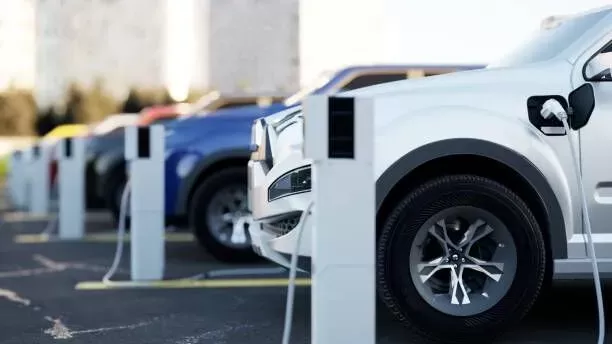Notifications

8 minutes, 31 seconds
-23 Views 1 Comment 0 Likes 0 Reviews

As a professional EV charger manufacturer in China, Topper Company provides reliable electric vehicle charging stations and comprehensive solutions to meet your charging needs.
As electric vehicle (EV) adoption continues to rise, one of the most important decisions for EV owners, fleet managers, and businesses is choosing the right Electric Vehicle Supply Equipment (EVSE). The choice often comes down to two main options: Direct Current Fast Charging (DCFC), also known as Level 3 charging, and Level 2 charging. While both types of chargers serve the same purpose—powering EVs—they cater to different needs and situations. So, the question is: Is faster always better when it comes to EV charging? The answer is not as simple as a yes or no.
DCFC, or Level 3 charging, is all about speed. These chargers can quickly recharge an EV's battery, making them perfect for situations where time is a key factor. You'll typically find DCFC chargers at high-traffic locations like highways, gas stations, and busy urban centers. DCFC can recharge an EV from empty to full in as little as 20 minutes to an hour, depending on the vehicle's battery size and the charger’s power output.
The biggest advantage of DCFC is its ability to minimize downtime. For long-distance travelers or commercial fleets on tight schedules, DCFC provides a quick energy boost, allowing drivers to get back on the road without much delay. However, this speed comes at a cost. DCFC chargers are more expensive to install and maintain compared to Level 2 chargers, and they require specialized infrastructure to support the higher power demands.
Level 2 chargers, on the other hand, are the backbone of everyday EV charging. They are slower than DCFC, taking anywhere from 4 to 10 hours to fully charge an EV, depending on the battery size. But this slower pace isn’t necessarily a disadvantage. Level 2 chargers are ideal for situations where vehicles are parked for extended periods, such as at homes, workplaces, or overnight fleet depots.
The beauty of Level 2 charging lies in its simplicity and cost-effectiveness. Since most EVs spend a lot of time parked—whether at home overnight or during the workday—Level 2 chargers take advantage of this downtime to provide a steady, reliable charge. This makes them an affordable and practical choice for various applications.
Selecting the appropriate charging solution depends on understanding the specific needs of your scenario. Here are some key factors to consider:
Dwell Time:
How long are the vehicles typically parked? If they are parked for several hours at a time, Level 2 charging is likely the best fit. For fleets that charge overnight, Level 2 chargers provide a cost-effective solution.
Battery Size and Usage:
If your organization relies on large batteries or operates vehicles continuously, such as in yard tractors or shipping ports, a mix of Level 2 and DCFC might be required to meet different energy needs.
Cost Considerations:
DCFC chargers are more expensive to install and operate. If you are looking for affordable and accessible charging, Level 2 infrastructure is usually the more economical choice.
User Experience:
Providing Level 2 charging at workplaces or residential complexes can enhance the overall user experience. Studies show that 91% of employees value access to charging at work, and 76% believe it’s important for employers to offer this amenity.
In short, no. While DCFC offers the benefit of speed, it’s not always the best solution. Charging speed should match the vehicle’s energy needs and how long it will be parked. In many cases, Level 2 charging is more than sufficient to meet the needs of EV drivers.
Here’s why Level 2 charging often makes more sense:
Depot Charging for Fleets:
For fleet operators, Level 2 charging is a practical and cost-effective choice for overnight charging. It ensures vehicles are fully charged and ready to go without disrupting daily operations.
Home Charging Dominance:
Around 80% of EV charging happens at home, where Level 2 chargers are the standard. This trend highlights the importance of slower, more affordable charging for everyday use.
Commuting Patterns:
The average commute is about 30 miles, meaning most drivers don’t need to fully charge their batteries every day. Level 2 chargers can easily meet these needs without requiring excessive infrastructure.
Cost Efficiency:
Level 2 chargers are less expensive to install and operate on a per-kWh basis. For example, in California, DCFC costs around 40 cents per kWh, while Level 2 costs about 30 cents. Over time, the savings add up.
Battery Health:
Frequent use of DCFC can potentially shorten battery life due to the high power levels involved. Level 2 charging, being slower and gentler, is better for long-term battery health.
While Level 2 charging is often more practical, DCFC plays a crucial role in the broader EV landscape. It meets the need for rapid charging in specific scenarios, like long-distance travel or fleets with tight schedules. DCFC stations help alleviate range anxiety and support widespread EV adoption, particularly for drivers who don’t have home charging options.
However, balance is key. Relying too heavily on DCFC can lead to unnecessary costs and infrastructure challenges. A well-rounded charging network should incorporate both Level 2 and DCFC options to ensure drivers have the right charging solution for their needs.
In the debate between DCFC and Level 2 charging, the answer is clear: faster isn’t always better. The right charging solution depends on specific use cases, balancing factors like dwell time, cost, and user convenience. For most everyday scenarios, Level 2 charging offers a reliable, affordable, and practical solution. Meanwhile, DCFC serves as a valuable complement for situations where rapid charging is essential.
As the EV market continues to evolve, the focus should be on creating a flexible and diverse charging infrastructure that meets the needs of all drivers. By understanding the strengths and limitations of both DCFC and Level 2 charging, businesses, fleet operators, and individuals can make informed decisions to help drive the transition to a more sustainable, electrified future.Know more about Google SEO Directory
China EV Chargers EV Charger Manufacturer EV Charging Solutions

7 hours ago- -
-
like
- -
-
Report